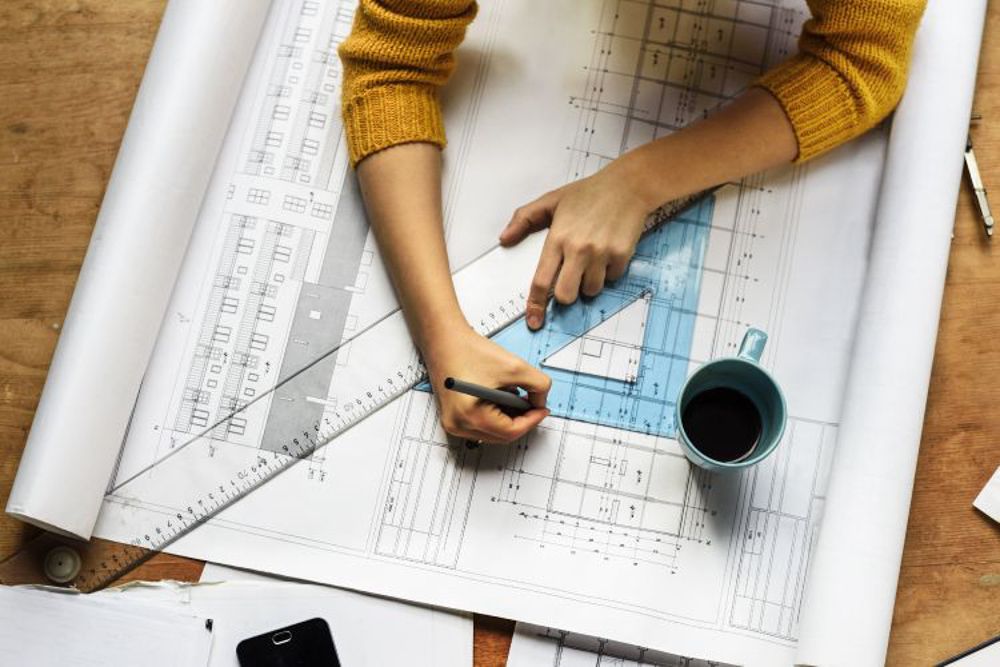Designing Your Desire Space: The Impact of Interior Design and Home Architect on Home Looks
The magic of developing a desire home exists not only in building prowess however likewise in the fragile virtuosity of interior layout. These two techniques link, with design providing the skeletal framework while interior layout breathes life right into the area with appearance, furnishings, and color selection.
The Crossway of Interior Design and Architecture: Greater Than Satisfies the Eye
Although many individuals believe that interior decoration and design are two different techniques, a closer evaluation reveals an interesting intersection between both. Style lays the structure, giving the shell within which interior decoration operates. However, the kind and feature of an area are not only determined by its building design. Interior Design plays a crucial duty in completing a framework and improving's building elements, concentrating on the choice and discussion of interior products such as furnishings, fixtures, and coatings. It is the interplay of these two disciplines that brings an area to life, changing it from a mere architectural entity into an all natural, lived experience. This symbiotic relationship underscores the relevance of incorporating building principles into interior layout, and vice versa, to attain a harmonious and aesthetically pleasing setting.
Utilizing the Power of Color Styles and Textures in Home Design
While the framework of a home might be the canvas, it is ultimately the usage of colors and textures within indoor layout that brings the vision to life. The strategic application of shades can set the state of mind, produce consistency, and even influence the viewed size of a room. Neutral tones offer a sense of calm and space, while bold shades can stimulate and draw focus. Textures play an essential function in including deepness and personality to a space. Harsh structures, like raw timber or brick, give rustic charm, while smooth surfaces, like marble, emanate sophistication. By recognizing the emotional impact of shades and responsive appeal of appearances, one can efficiently change a house into a psychologically appealing and aesthetically engaging home.
-min.jpg)
The Duty of Furniture in Specifying Space and Way Of Life
Furnishings functions as a defining aspect in interior decoration, influencing both area and way of life. It not only provides functional utility yet also contributes to the visual appeal of the home. The choice of furniture can dramatically affect the understanding of area, with pop over to this web-site larger items creating an impression of splendour, while smaller, minimalist styles can make a space appear roomy. Furnishings acts as a reflection of the property owner's way of living and individual preference. A preference for vintage, rustic furniture might show a love for tradition, whereas streamlined, modern pieces typically suggest a contemporary, urban way of living. Therefore, furnishings choice plays an essential function in defining and individualizing area, with each piece functioning as a testimony to the home owner's unique identification. Countryside Homes interior design.

Architectural Considerations for Personalized Spaces
Beyond the prominent role of furnishings, architectural factors to consider additionally play an essential component in customizing spaces. The format, layout, and framework of a home can significantly look at this site impact its overall visual, capability, and the inhabitants' comfort. Understanding the home's building aspects, such as the shapes and size of spaces, the placement of doors and home windows, and the kind of materials used, can assist one customize their room to their lifestyle and preferences. Furthermore, building elements like arcs, columns, fire places, and stairways can serve as the prime focus of a room. Stabilizing these architectural details with appropriate furniture, shade plans, and lights can produce a unified and tailored setting. Style, as a result, is a crucial variable in developing one's desire room.
The Mental Impact of Aesthetically Pleasing Spaces
The impact of aesthetically pleasing spaces on human psychology is profound. These environments not only appeal to the senses however likewise contribute to an individual's total well-being. They can boost imagination, generate relaxation, and also affect state of mind. Structures, colors, and patterns can evoke emotional responses, while the format and lights can affect habits and interactions. A well-designed space, with its mindful balance of aesthetic appeals and performance, can foster a feeling of harmony, promoting positivity and efficiency. Alternatively, poorly designed spaces can create sensations of discomfort or anxiety. As a result, interior decoration and style are not just regarding developing visually enticing rooms, however likewise concerning growing settings that enhance psychological health and contentment.

Final thought
To conclude, creating your desire room is a nuanced process that balances the architectural aspects of design with the visual selections of indoor layout. By very carefully selecting colors, structures, and furnishings, you can craft areas that not just look gorgeous however additionally functionally serve your lifestyle. Ultimately, the successful integration of these techniques advertises health and wellbeing, stimulates creativity, and promotes a sense of individuality within the home.
Designing Your Desire Space: The Influence of Inside Layout and Home Engineer on Home Aesthetics Countryside Homes interior design.
The magic of making visit our website a dream home exists not only in building prowess however likewise in the delicate artistry of indoor design. These two self-controls intertwine, with design giving the skeletal structure while interior design takes a breath life into the room with structure, furnishings, and shade option.Furnishings serves as a specifying aspect in indoor design, influencing both space and way of living.In final thought, developing your dream space is a nuanced process that balances the architectural components of style with the visual options of indoor style.